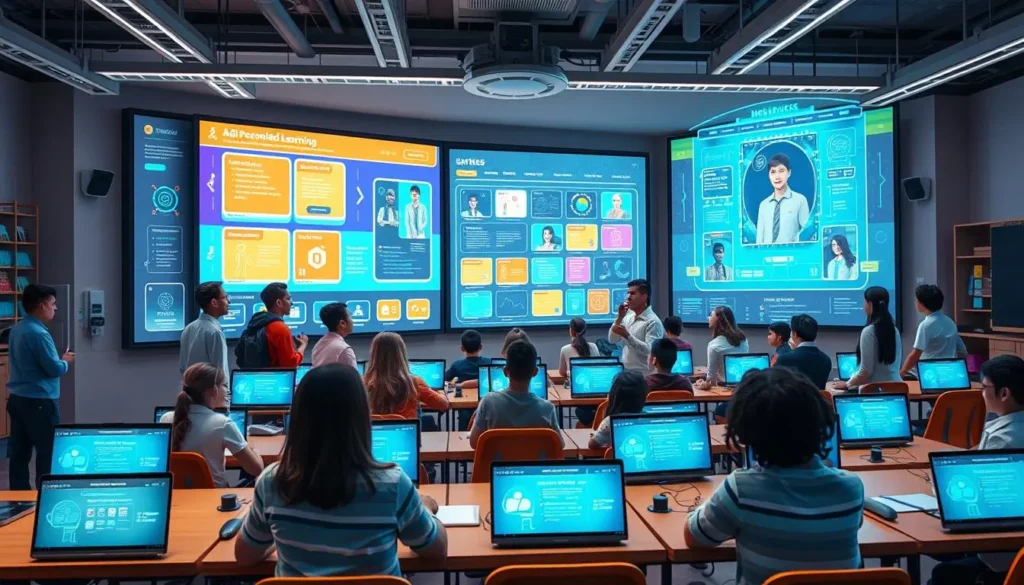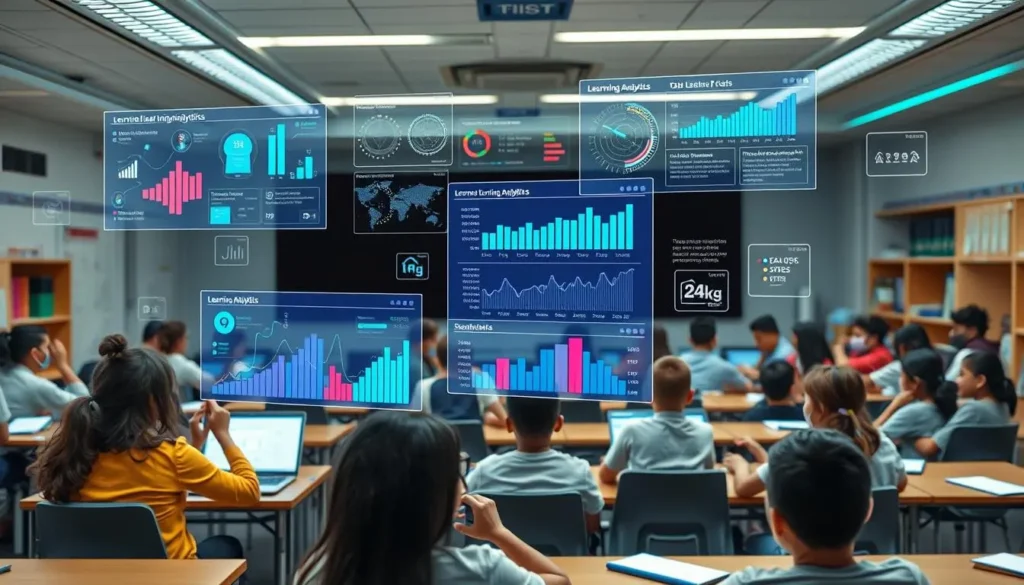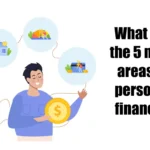The AI in education market will reach $25 billion by 2025. This significant growth reflects how AI is transforming education as we know it. This guide examines what’s new in AI learning systems. It highlights how they’re improving education for kids and schools.
This guide discusses learning platforms powered by AI. This gives an overview of what they are, the benefits of using them and how to use them. We’ll see tools like smart tutoring, adaptive tests. These will be central to the future of learning and how to integrate them into current systems.

This guide is for you if you teach, run a school or seek to learn more. It’s your guide to deciphering AI in education in 2025 and beyond.
The Evolution of Educational Technology Explained
It is a radically more powerful technology than we have seen so far. And now we have A.I. in our classrooms. It has changed the way we learn a lot.
With AI at the core, the transition from traditional to new learning has a greater impact.
Before, schools were simple. WORK, WORK, WORK The teachers taught everybody the same shit. However, now learning differs widely in the realm of artificial intelligence (AI) and machine learning. Students receive more personalized lessons.
Trends that are Promoting Rise of Smart Learning Environments
AI-based instructional design has made smart classrooms a reality. These are data-driven classrooms that use data to teach each student how they learn best. It’s about personalization of learning.
Important EdTech Technologies and Trends
Emerging technology such as natural language processing and predictive analytics have revolutionized education. These enable teachers to make learning relevant and fun for every student” You know, creating these personalized learning experiences.
| Traditional Learning | Modern AI-Enhanced Education |
|---|---|
| Standardized, one-size-fits-all approach | Personalized and adaptive learning experiences |
| Limited access to resources and information | Seamless access to a wealth of digital content and resources |
| Passive learning with limited engagement | Active, immersive, and engaging learning environments |
| Standardized assessment and feedback | Real-time, data-driven assessment and personalized feedback |
Across modalities, the future of learning is promising! AI-powered personalized learning platforms are poised to take education to the next level.
An All-Inclusive Guide To AI-Driven Personalized Learning Platforms
The field of education is evolving rapidly with AI driven learning platforms. AI in Education: Applicability, comparisons, and use cases of machine learning for data-driven curriculum personalization and ai-enhanced learning experiences. Thus, learning become in line with each student’s needs and preferences.
They have a wealth of data on how students learn. They employ AI, which analyzes a ton of data, identifies trends, and adapts learning material dynamically. This enables every student to receive the help they need to do well.
Individualizing the Learning Experience
These platforms devise learning paths for each student through smart algorithms and data. They do this by:
- Moderating Practice to Avoid Overwhelm (1:00) Checking what the student knows, what they’re good at, and what they struggle with
- Noncorporate Student-Level Education:
- Providing feedback and instruction that is specific to that student
- Adjusting the intensity and pace of learning materials
An approach where students experience challenges, enhance their capabilities, and achieve their full potential.
How AI and Personalized Learning Can Go Hand in Hand
AI is critical in making these platforms operate. It employs machine learning algorithms to:
- Examine the way students perform and discover patterns
- Profile your question and help students immediately
- Personalize content, activity and testing to individual students
- Provide intelligent tutoring and virtual coaching
AI enhances these learning experiences, allowing students to have ownership over their learning.
AI-Powered Personalised Learning: The Benefits
Education is embedded with changes by AI in learning. Some big benefits are:
- And the students themselves become more excited, more motivated to learn.
- Academics: Students perform better in school and learn more
- Students who are different receive the support they require
- Data181 Teaching207 Teachers use data to make learning better
- Study shows how real-time feedback improves teachers
As we continue to integrate AI into education, learning will become more personalized, adaptable, and empowering.
| Top-Rated AI Learning Platforms | Key Features |
|---|---|
| Knewton | Adaptive learning algorithms, real-time performance analytics, personalized content recommendations |
| DreamBox Learning | Intelligent tutoring, data-driven instruction, game-based learning experiences |
| Century Tech | Personalized learning pathways, formative assessments, AI-powered teaching assistants |
“AI can share resources with at-risk students and help them catch up with their peers, and this personalized learning platform can transform education and enable students to learn to their full potential and leave stumbling blocks behind them to reach unprecedented heights of success.”
The key elements of intelligent tutoring systems
Intelligent tutoring systems (ITS) take the lead in ai-powered instructional design. They use advanced tech like machine learning and natural language——for education and natural language processing. It makes growth part of each individual student’s journey.
A Guide to Machine Learning Algorithms in Education
Machine learning algorithms are the heart and soul of ITS. They analyse student data to identify patterns and predict how well they will perform. These algorithms personalize the learning material and the way it’s presented to each student.
However, they have been monitoring student progress. After that, they tailor the teaching to assist even more. This ensures that learning is both fun and effective at the same time.
Natural Language Processing for Training
ITSs cũng sử dụng NLP (natural language processing). This helps them know what students say and do. It sounds more natural for rehashing feedback, and gives the explanation a delivery students understand.
The students can even have a real interaction with the system. This makes the learning process feel less like the students are talking at a teacher and more like they are talking to a friend.
Assessment of Students Using Predictive Analytics
ITS use predictive analytics — overall trends like how much time each student spends studying — to estimate when students will need assistance. The study examines how students perform and what they learn. That way, they can intervene before students are blocked.
They learn where students may struggle. Then they provide assistance that’s tailored to them.
| Component | Description |
|---|---|
| Machine Learning Algorithms | Analyze student data to personalize learning content and delivery |
| Natural Language Processing | Understand and interpret student interactions for more natural feedback |
| Predictive Analytics | Identify learning challenges and offer personalized interventions |
By combining these parts, intelligent tutoring systems change how we learn. They make learning more fun, flexible, and effective for everyone.
The Energy of The Adaptive Learning Systems in Education
The future of education is evolving rapidly with adaptive learning systems. They use Artificial Intelligence (AI) to build personalized and fun learning for every student. That improves learning for all.”
Intelligent learning path optimization are the focus of these systems. They use clever algorithms to look at how students perform and what they need. They adapt the learning to better educate students, however.
Personalization of learning has been made possible through educational technology Ad-tech. These A.I. tools adapt to the way each student learns. This allows students to learn at their own pace and achieve their goals.
Why Adaptive Learning Systems Are Good For You
- Tailored learning experiences that fit individual needs
- Immediate feedback and evaluation to monitor student progress
- Using org3d to optimize individual learning path to improve learning outcome
- Full engagement with students and motivation with adaptive propositions
- This product analyses student data and generates valuable insights for educators to improve their teaching strategies all the way.
Adaptive learning systems are transforming education for good. They help make learning more personalized and effective for everyone.
“Adaptive learning systems could change the landscape of education by opening the door to new horizons of customized learning.” – Emily Watkins, Education Researcher
For Educational Institutions Implementation Strategies
Introducing AI-powered educational platforms in schools requires an intelligent approach. You need to play nicely with existing systems. This improves learning for every individual student.
Teachers also need help. They have to know how to use new tools. That way, they can better meet the needs of each student.
Data Security and Privacy Considerations
When schools use A.I., data safety is paramount. They have to safeguard student data and comply with the law. This encourages trust and ensures learner safety.
| Integration with Existing LMS | Teacher Training and Development | Data Security and Privacy |
|---|---|---|
| Seamless integration with current learning management systems | Comprehensive training programs for educators | Robust data governance frameworks |
| Enhancing digital infrastructure for a student-centric experience | Empowering teachers to harness AI-driven personalized learning | Encryption protocols and transparent data usage policies |
| Leveraging the power of AI-based personalized learning | Enabling data-driven curriculum personalization | Building trust and protecting learner privacy |
Schools that focus on these areas can leverage artificial intelligence effectively. Here’s how students learn differently. It offers a fun, flexible, and safer way to learn.
Learning Analytics — Measuring Success
Today it is important to verify whether learning works in AI. Student-centric learning analytics help teach if data-driven curriculum personalization and ai-enhanced learning experiences are good.
The data explored in learning analytics help understand how students perform. They monitor how students learn, and what they improve at. It also helps teachers understand how to support each student.
- Tracking Student Progress: Personalized learning platforms use advanced analytics to track how individual students perform. They learn what students can do, and what they need to improve on.
- Optimizing Curricula: Learning analytics help improve the lessons for every student. They ensure the instruction is tailored to what each student needs.
- To Make Learning Experience Better, AI learning Platforms Continues to Improve Based on Student Interactions They can help everyone learn better, and make it much more fun as well.
| Metric | Description | Importance |
|---|---|---|
| Student Engagement | Measures how much students participate and interact in the platform | Shows if the platform keeps students interested |
| Learning Outcomes | Tracks how well students do with the platform | Checks if the platform helps students learn and grow |
| Personalization Effectiveness | Looks at how well the platform changes lessons for each student | Sees how well personalization helps students do better |
Student-centered learning analytics is helping teachers improve AI learning. They ensure students receive the data-driven curriculum personalization and ai-enhanced learning experiences they need to succeed.

“And it requires recognizing that learning analytics is not simply about gathering data but turning that data into an actionable agenda for educational change.”
Features and Capabilities for Student Success
Schools are evolving with new personalized educational technology. It motivates students to perform their best. They contain ability-specific tools for each student.
How Intelligent Learning Path Optimization and Adaptive Learning Systems Are Transforming Education
Personalized Learning Paths
AI generates a personalized learning path for every student. It considers how they learn and what they know. Next, it adapts lessons to optimize for them.
It helps students with their studies and makes learning exciting.
Real-time Feedback Systems
You need fast feedback if you want to learn well. Students get immediate feedback from AI. It shows they’re strengths and their weaknesses.
In this way, students learn even more and understand more.
Adaptive Assessment Tools
Old exams don’t necessarily reflect what children know. Adaptive tests change based on answers. That makes tests more accurate.
And then teachers are able to teach in a better way, aligned to student needs.”
They make education better with AI-driven learning platforms. They let students be part of their learning. This makes learning more fun and personal.
Also Read: Virtual Reality Classrooms: Transforming Immersive Education in 2025
AI in Education: New Directions for Tech-Powered Learning
Education is changing fast. Artificial Intelligence in Education: How AI is Used in the Classroomai-powered instructional design and machine learning. They are proposing to auxiliary to make learnt easier and engage for all.
Adaptive learning systems are becoming more intelligent. They use extra tools to know how each pupil learns the best. That means students receive custom-tailored lessons that make learning a better and more enjoyable experience.
Virtual and augmented reality are heading to schools. With these tools, experience and fun become part of the learning process. Students will get to experience new, cool ways of learning.
Cloud-based learning is also growing. It allows educators to create lessons that engage students on a deep level. And it shows students which books and videos are right for them.
These new tools will blend human instructional power with AI’s. It will provide students with the right-fit learning. It will be fun, smart, and really helps them grow.
“The future of education lies in the intersection of human-centered pedagogy and cutting-edge artificial intelligence technologies.”
Platform Selection and Best Practices for Implementation
Like so many other fields, the world of education is changing rapidly. robotics & ai-driven personalized learning platforms are at the forefront. Tools such as adaptive learning (e.g., online learning systems) and intelligent tutoring systems are transforming the nature of the student learning experience and the way teachers instruct. In order to leverage these tools effectively, it’s critical to understand the most useful ways to select and apply them.
How to Evaluate AI-Driven Personalized Learning Platforms
Evaluating for the right ai-driven personalized learning platform is crucial. Check out these key details:
- To how customizable it can be for each student
- Just make sure it integrates nicely with your school’s existing systems
- How it protects the security and privacy of student data
- What reports and data it provides
- If it can evolve with your school’s changing needs
How to Successfully Implement a Platform
Implementing an ai-based personalized learning platform requires some thinking. Here are some tips to help:
- Ensure that teachers are using this (correctly)
- Decide how to communicate the change to everyone
- Watch how well the platform is performing
- The key is to get students and parents involved—and to actually use it.
- Reach out to the makers of the platform for support
These are some tips and tricks to optimize ai-driven personalized learning platforms. This can truly revolutionize the way students learn and lead them towards their highest capacity.
| Key Considerations | Best Practices |
|---|---|
| Platform Evaluation | Personalization capabilities LMS integration Data security and privacy Reporting and analytics Scalability and adaptability |
| Platform Implementation | Teacher training and professional development Clear communication and change management Continuous platform optimization Student and parent engagement Collaboration with the platform provider |
“It is a decisive step toward ai-driven personalized learning.) It takes thought and attention and action. If schools follow these tips, it can use these new tools to provide students with an education experience that truly works for them.”
Conclusion
Leaning systems powered by AI will transform formal education considerably. They apply artificial intelligence to tailor learning experiences for individual students. That means individualized instruction tailored to the way each student learns best.
Smarter tech to make better students to these helps educators. They change what they teach and how they teach it. That makes learning more fun and assists students to absorb more material.
The better AI becomes, the better learning becomes. Educational institutes can use these tools to improve learning even further. This loads all students, so they can achieve their maximum ability and prepare for the futures.
FAQ
What are the core components of AI-driven personalized learning platforms?
These platforms use machine learning and natural language processing. They also use predictive analytics. This helps create learning experiences that fit each student’s needs and likes.
How do adaptive learning systems transform the educational experience?
These systems change based on how each student is doing. They offer content and learning paths that are just right for each student. This makes learning better and helps students do well in school.
What are the key considerations for implementing AI-driven personalized learning platforms in educational institutions?
Schools need to think about a few things. They must work with their current systems and train teachers well. They also need to make sure data is safe and private.
How can learning analytics help measure the success of AI-enhanced learning experiences?
Learning analytics give insights into how students are doing. They help improve the learning experience by making it better for each student.
What are some of the student-centric features offered by these advanced educational technologies?
These technologies offer personalized learning paths and real-time feedback. They also have adaptive assessment tools. These features help students stay engaged and learn more.
What are the future trends in AI-enhanced learning?
The future looks bright for AI in learning. We’ll see better AI in teaching, more machine learning in schools, and more immersive learning experiences.
What are the best practices for selecting and implementing AI-driven personalized learning platforms?
To choose the right platform, schools should compare options carefully. They should make sure it works with their systems and train teachers well. They also need to keep checking how well the platform is working.








